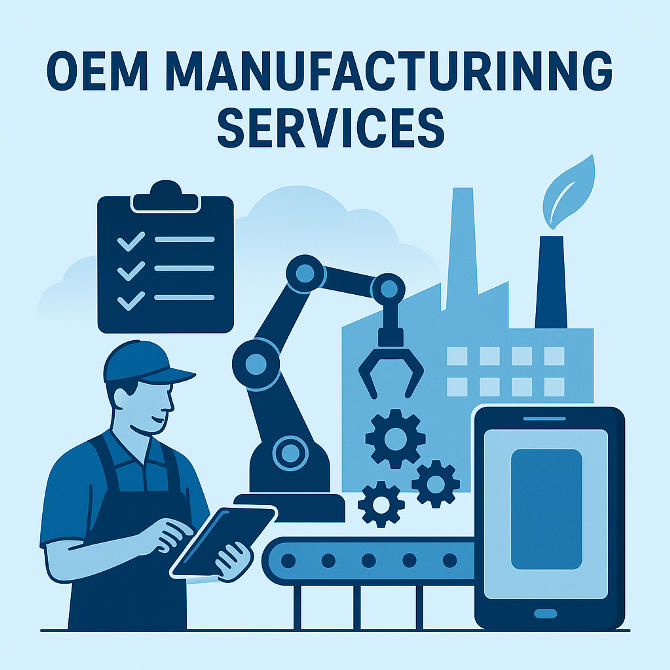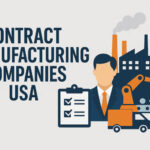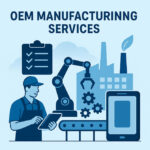In an era where agility, innovation, and efficiency determine a company’s competitive edge, OEM (Original Equipment Manufacturer) manufacturing services play a vital role in product development and business scalability. From consumer electronics to automotive components, OEMs are the behind-the-scenes enablers of global supply chains, allowing brands to launch high-quality products without the heavy investment in manufacturing infrastructure.
This article delves deep into the world of OEM manufacturing services—what they are, how they work, their advantages and challenges, industry applications, trends, and strategic considerations when choosing an OEM partner.
What Are OEM Manufacturing Services?
At its core, OEM manufacturing involves a business outsourcing the production of components, assemblies, or entire products to a third-party manufacturer. These OEMs manufacture goods according to the specifications provided by the brand, which then markets and sells the finished product under its own name.
Unlike contract manufacturers who may offer turnkey solutions or design input, OEMs often specialize in mass-producing items already designed by their clients. However, the lines have blurred over time, with many OEMs expanding their capabilities to include product design, engineering, and even post-production services such as logistics and repair.
For example, a company that designs electric scooters might not have the expertise or infrastructure to build them at scale. An OEM partner based in China, India, or Eastern Europe could take over the production, allowing the original company to focus on marketing, sales, and customer service.
The Rise of OEM Manufacturing: A Historical Perspective
OEM manufacturing has evolved significantly over the past century. Initially rooted in the automotive industry—where companies like Ford and General Motors outsourced parts like alternators and brakes—OEM manufacturing is now ubiquitous across nearly every major sector, including electronics, consumer goods, healthcare, aerospace, and industrial machinery.
The acceleration of globalization and technological advancement in the late 20th century made it easier for companies to collaborate with manufacturing partners overseas. As labor costs dropped in regions like Southeast Asia and Eastern Europe, OEMs there gained a competitive edge by offering quality manufacturing at reduced prices.
With increasing emphasis on time-to-market, quality, and customization, OEM services have adapted to become more integrated and responsive, playing a strategic role in new product introductions.
Key Benefits of OEM Manufacturing Services
1. Cost Savings
The most obvious benefit of OEM services is cost efficiency. Building and operating a factory, hiring skilled labor, and maintaining equipment require massive capital investment. OEMs absorb these costs and offer clients a way to produce goods without heavy infrastructure spending.
2. Faster Time-to-Market
With pre-established facilities, experienced teams, and optimized supply chains, OEMs can drastically reduce the time it takes to bring a product from concept to market. This is particularly beneficial in fast-paced industries like consumer electronics, where product lifecycles are short and innovation is constant.
3. Focus on Core Competencies
By outsourcing manufacturing tasks, companies can redirect their resources toward areas that drive differentiation—such as R&D, brand development, and customer experience. This focused strategy allows for stronger business positioning and long-term growth.
4. Scalability and Flexibility
OEMs offer the ability to ramp up or scale down production based on market demand. This is ideal for seasonal products or when responding to sudden surges in customer orders.
5. Access to Advanced Technology and Expertise
Many OEMs are specialists in their domain and continually invest in the latest manufacturing technologies and quality standards. This allows partner companies to benefit from state-of-the-art production without direct investment.
6. Global Market Reach
OEMs often have international logistics and distribution networks in place. Partnering with them can help companies reach global markets faster, with better compliance and reduced shipping costs.
Common Industries That Use OEM Services
– Electronics
Smartphones, laptops, cameras, and smart appliances are often produced by OEMs in countries like China, Taiwan, and South Korea. Companies like Apple and Dell design their products but rely heavily on OEMs like Foxconn for production.
– Automotive
OEMs in the automotive sector produce critical components like engines, braking systems, lighting units, and infotainment consoles. Tier 1 suppliers often act as OEMs for brands like BMW, Toyota, and Tesla.
– Medical Devices
OEMs in this space must comply with stringent regulatory standards (like ISO 13485) to manufacture diagnostic equipment, surgical tools, and wearable health tech.
– Aerospace and Defense
Due to high precision requirements and regulatory oversight, OEMs that serve aerospace companies often provide custom-engineered parts and assemblies with full traceability.
– Consumer Goods
From kitchen appliances to sports equipment, OEM services enable brands to offer a wide variety of products without managing diverse manufacturing processes.
OEM vs ODM: What’s the Difference?
While the terms OEM and ODM (Original Design Manufacturer) are often used interchangeably, they differ in scope and responsibility.
- OEM: The client provides the design and specifications. The OEM produces the item accordingly.
- ODM: The manufacturer provides a product design, which the client can rebrand and sell. ODMs offer more of a turnkey solution.
Understanding this distinction is important when choosing the right partner for your business model.
Challenges in OEM Manufacturing
While OEM services offer numerous advantages, they come with challenges that businesses must manage carefully:
1. Quality Control
Outsourcing means giving up some direct oversight. Poor quality control can lead to defective products, recalls, and brand damage. It’s vital to choose OEMs with robust quality assurance systems.
2. Intellectual Property Risks
Sharing design files and proprietary information opens the door to potential IP theft, especially in regions with weaker enforcement laws. Strong contracts and legal protections are essential.
3. Supply Chain Disruptions
Global OEM operations are vulnerable to political unrest, natural disasters, and shipping delays. The COVID-19 pandemic highlighted how fragile international supply chains can be.
4. Communication and Cultural Barriers
Differences in language, time zones, and business culture can affect project timelines and outcomes. Clear documentation and regular communication are key.
5. Dependency Risk
Relying heavily on a single OEM partner can be risky if they face financial trouble, legal issues, or fail to meet demand. Diversifying suppliers can mitigate this risk.
Selecting the Right OEM Partner
Choosing the right OEM can make or break a product launch. Here are key factors to evaluate:
– Experience and Reputation
Look for OEMs with a proven track record in your industry. Ask for references and review case studies.
– Certifications
Ensure the OEM complies with necessary industry standards (e.g., ISO 9001, ISO 13485, IATF 16949).
– Manufacturing Capabilities
Assess whether the OEM can handle your material, volume, and technical complexity.
– Transparency
Open communication, cost breakdowns, and willingness to collaborate are all indicators of a good partner.
– After-Sales Support
Check if the OEM offers support for logistics, repairs, or warranty management.
Emerging Trends in OEM Manufacturing
1. Digital Transformation (Industry 4.0)
Smart factories using IoT, robotics, AI, and cloud computing are becoming the new norm. These technologies help OEMs reduce waste, improve efficiency, and respond to market changes in real time.
2. Sustainable Manufacturing
Environmental concerns are pushing OEMs to adopt cleaner practices, use renewable energy, and minimize waste. Eco-conscious clients often seek partners aligned with their ESG goals.
3. Nearshoring
In response to global disruptions, companies are shifting from far-shoring (e.g., China) to nearshoring (e.g., Mexico, Eastern Europe) to improve lead times and reduce risk.
4. Mass Customization
OEMs are developing the ability to produce highly customized products in small batches, supporting businesses that prioritize personalization and niche markets.
5. Vertical Integration
Some OEMs are evolving into ODMs, offering design and logistics support alongside production. This blurs traditional roles and opens up new collaboration opportunities.
Case Study: Apple and Foxconn
A prime example of OEM success is the partnership between Apple and Foxconn. While Apple is known for its iconic design and innovation, it relies heavily on Foxconn to manufacture its iPhones, iPads, and MacBooks. Foxconn has vast manufacturing campuses in China and other countries, employing hundreds of thousands of workers.
This partnership allows Apple to:
- Maintain low overhead in manufacturing
- Scale production rapidly with global demand
- Focus on R&D, software development, and ecosystem integration
However, it also shows the risks—labor disputes, political tensions, and supply chain issues can affect Apple’s ability to deliver products on time.
Conclusion: OEMs as Strategic Partners
In today’s interconnected, high-speed world, OEM manufacturing services are more than just outsourced labor—they are strategic partners that enable businesses to innovate, grow, and compete globally. By choosing the right OEM partner and aligning business strategies, companies can deliver world-class products without bearing the full weight of manufacturing complexities.
However, success in OEM relationships hinges on due diligence, clear communication, quality control, and alignment of values. As technologies and market demands evolve, OEMs will continue to be indispensable players in shaping the future of manufacturing and product development.
If you’d like this formatted for publication (e.g., with SEO optimization, images, or headings for WordPress), just let me know!






